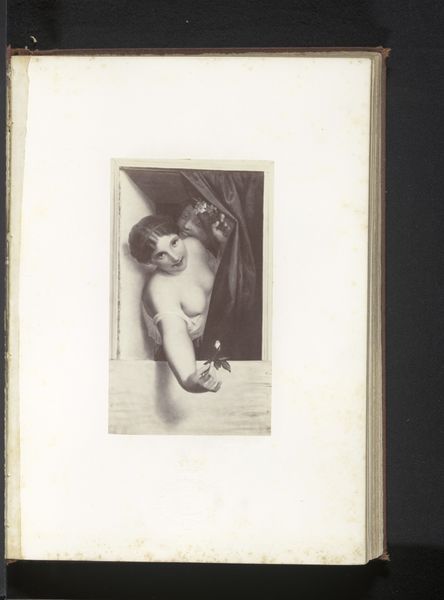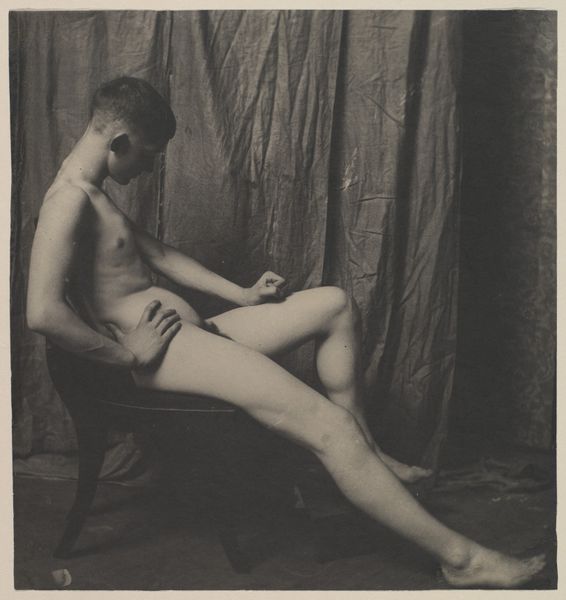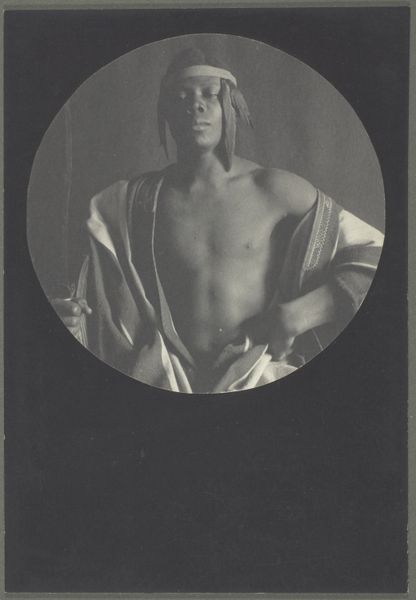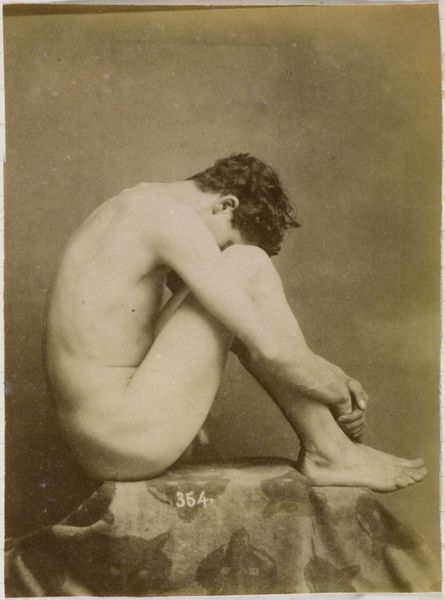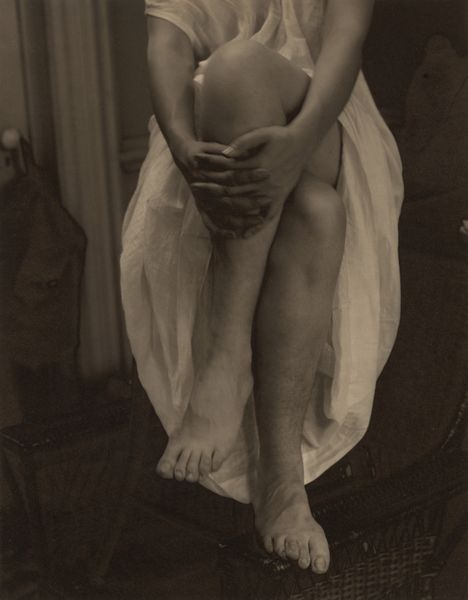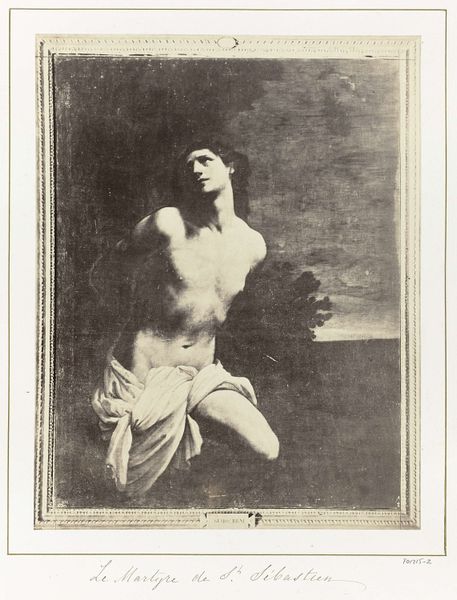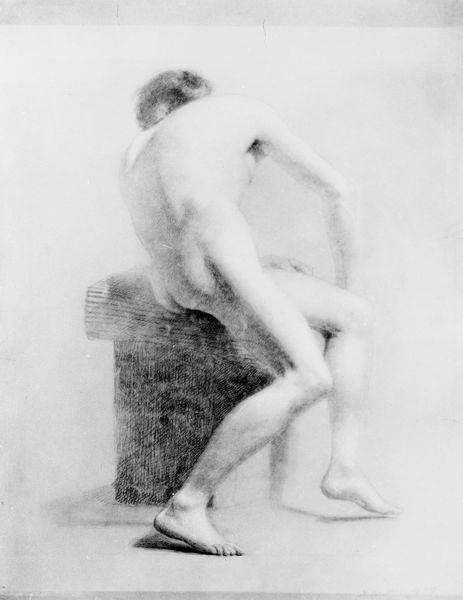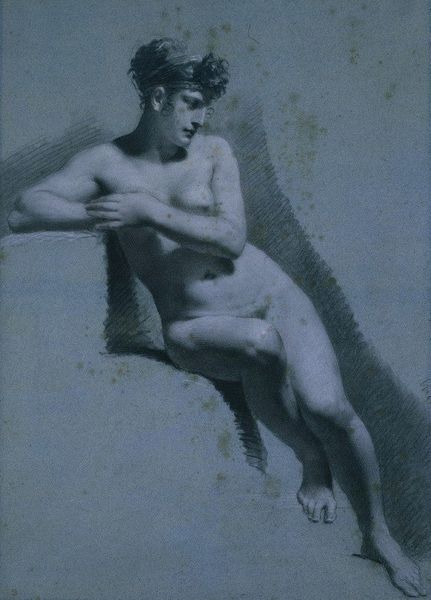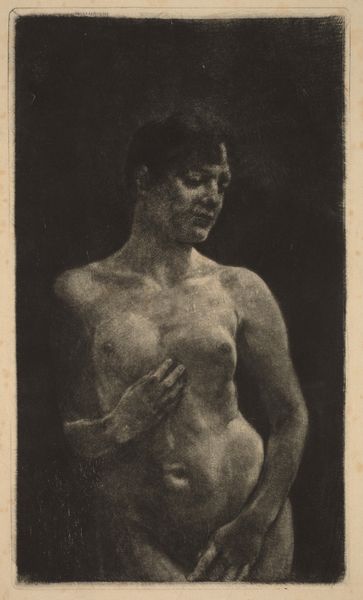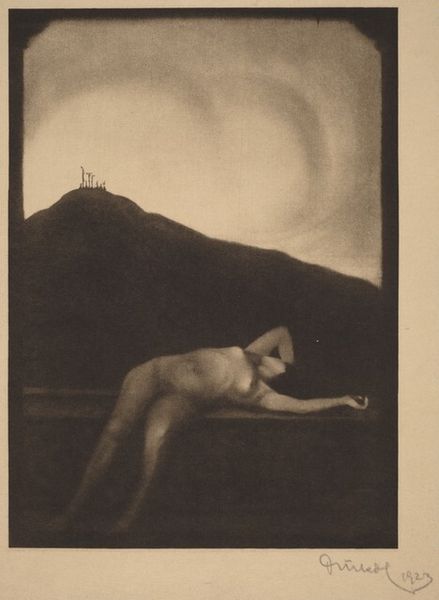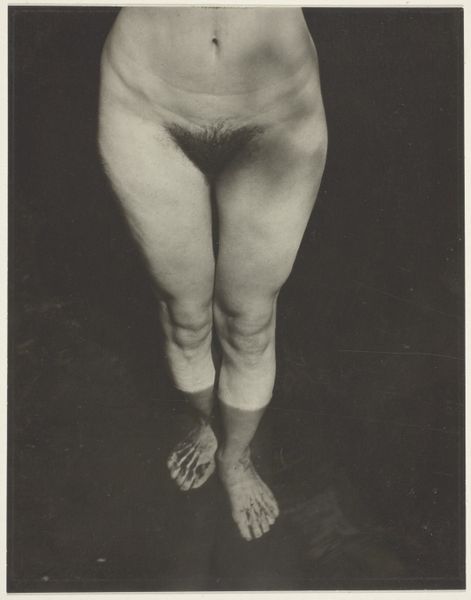
Dimensions: 9 3/4 x 9 3/4 in. (24.77 x 24.77 cm) (image, diameter)15 7/8 x 11 13/16 in. (40.32 x 30 cm) (mount)
Copyright: No Copyright - United States
Curator: This gelatin silver print, "Life's Cycle" from around 1926 by Henry Sill, offers a powerful visual statement. What strikes you first? Editor: The stark geometry overlaid with such vulnerable humanity creates a somber tone; the palette contributes, creating an almost overwhelming feeling of melancholy. Curator: I find myself immediately drawn to the visual language. The circle—that stark, patterned disc—resonates universally as a symbol for cycles, continuity, even fate itself. Consider the pose of the figure nestled against it. Is this a depiction of resignation, or perhaps comfort within an unending loop? Editor: I am thinking more along the lines of tension and balance. Note how the organic, flowing form of the figure presses up against the sharp, unyielding shapes within that perfect geometric construction. This relationship dictates much of the image's narrative and is amplified by tonal variations of silvery light and shadow. Curator: It's the art deco influence on that geometric circle, I think, that steers my thinking. This period embraced clean lines and ordered forms to symbolize progress and control, yet here, the vulnerable nude figure seems weighed down. A stark commentary, maybe, on modernism's promises. Editor: Agreed. There's definitely a compelling paradox there. The Art Deco elements feel deliberate—a stark contrast against the soft, yielding flesh, amplifying the overall tension, but in his careful treatment of tone, Sill unites them—or perhaps even neutralizes them? Curator: Consider also that he presents the human form stripped bare. Absent of artifice. Placed so intimately within a geometrical container. I wonder, did Sill mean to symbolize our vulnerability as we circle through repeating patterns? Do we become passive agents guided by our own internal geometries? Editor: Whether Sill consciously intended all of that symbolism is another question, but his careful orchestration of light and form ensures this work is powerfully emotive, inviting continuous observation of all the tonal, textural and abstract possibilities that a single artistic choice provides. Curator: Yes. "Life's Cycle" manages to resonate through its manipulation of symbolic weight and personal vulnerability, capturing anxieties within modernism’s rigid, aesthetic ideals. It prompts us to question who is master, the body or the form around it? Editor: A great success in capturing the very mood that speaks of modern life through contrasts alone, in my opinion.
Comments
No comments
Be the first to comment and join the conversation on the ultimate creative platform.
